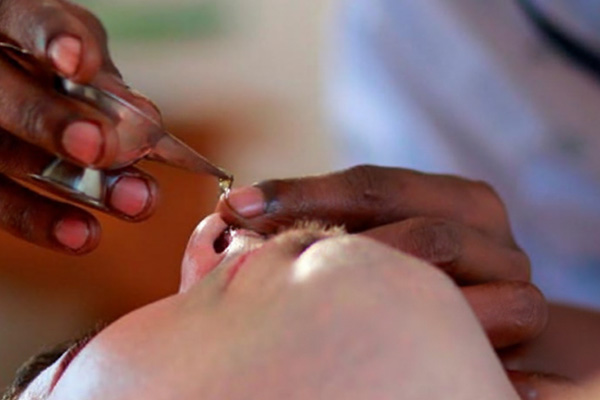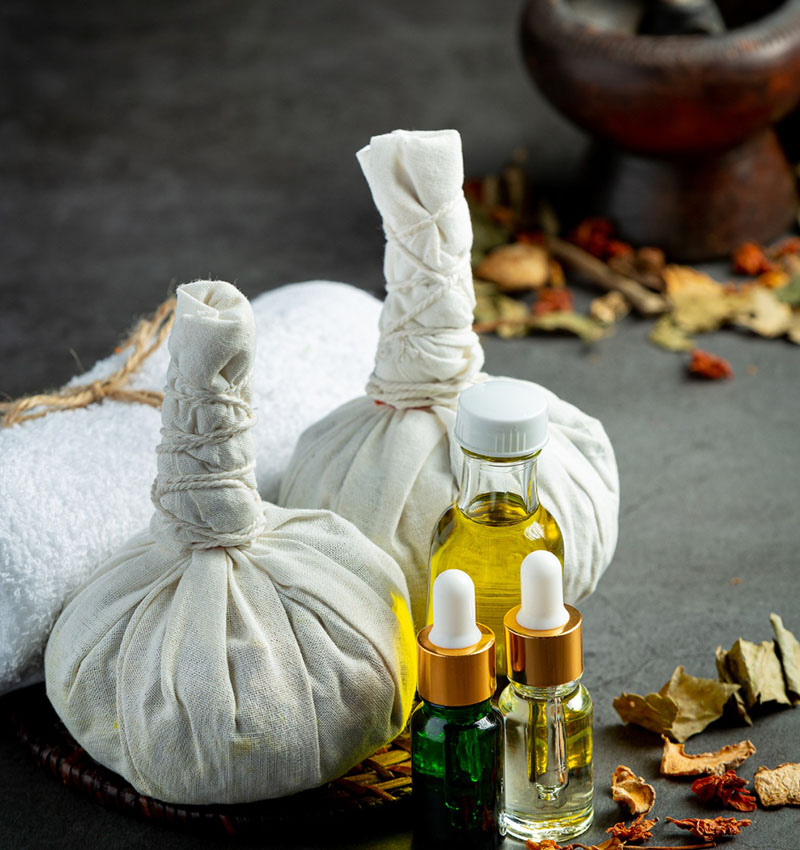
Panchakarma
Panchakarma, the ancient and recognized therapeutic procedure, is Ayurveda’s answer to all chronic diseases. Panchakarma means “five therapies.” These five cleansing therapies are designed to eliminate all kinds of toxins from the human body that cause diseases. They are named as Vamanam, Virechanam, Nasyam, Vasti, and Raktamokshanam. Panchakarma therapy eradicates the diseases from their root and prevents relapse. It is a powerful rejuvenation therapy that allows the body’s systems to repair and restore natural balance.
For the easy elimination of increased Doshas, preliminary therapies called Purvakarmas are administered before each process. These mainly include Oleation (Snehana) and Fomentation (Swedana). Oleation makes the body unctuous, improving Dosha flow by liquefying them. Fomentation removes obstructions in the channels, stiffness, and heaviness, melting toxins (Ama) and directing them toward the digestive tract (Koshta). Once Purvakarma is complete, Panchakarma is performed.
Vamana (Emesis Therapy)
Vamana is a medically induced emesis that removes excess aggravated Kapha and Kaphaja Ama from the body. Before the procedure, the body is prepared with internal lubrication (Snehapana) and fomentation to collect and liquefy excess Kapha. This therapy is effective in treating conditions like chronic allergies, indigestion, vitiligo, obesity, eczema, psoriasis, psychological disorders, insanity, and many respiratory complaints.
Virechana (Purgation Therapy)
Virechana is a therapeutic purgation that eliminates excess Pitta and Paithika Ama from the body—primarily accumulated in the liver, spleen, small intestine, and blood. The therapy begins after several days of internal and external oleation and sudation. When toxins are loosened and brought to the digestive tract, purgation is induced. It is highly beneficial in treating skin and blood disorders, vataraktha, kushta, malabsorption syndrome, ascites, urticaria, peptic ulcers, acne, hyperacidity, and chronic headaches.
Snehavasthi (Medicated Oil Enema)
In Snehavasthi, medicated oil or ghee is introduced into the colon through an enema to lubricate the body and nourish tissues. It is mainly used to prepare for Kashayavasti and treat degenerative disorders. This therapy provides deep nourishment and helps maintain the health of the nervous system.
Kashayavasti (Medicated Decoction Enema)
Known as Ardha Chikitsa (“half of all treatments”), Kashayavasti involves introducing about 1200ml of medicated fluids—including kashayam, oil, salt, honey, and herbal paste—into the colon to purify the entire body. When done after proper preparation, it cleanses far beyond the colon, purifying and nourishing the whole body. It is highly effective for chronic degenerative diseases of the nervous system, arthritis, gout, sciatica, back pain, infertility, rheumatism, constipation, multiple sclerosis, Parkinson’s disease, and neuromuscular disorders.
Nasya (Nasal Administration)
Nasya involves the administration of medicated oils, ghee, herbal juices, or powders through the nostrils to clear excess Doshas accumulated in the head, throat, nose, and sinus regions. Since prana (life force) enters through the nostrils, this treatment nourishes and purifies the head and nervous system. It is highly beneficial in trigeminal neuralgia, Bell’s palsy, cervical spondylitis, nasal polyps, epilepsy, paralysis, migraine, tinnitus, rhinitis, brain tumors, and various headaches.
Raktamokshana (Bloodletting Therapy)
Raktamokshana, though the most limited among the five major cleansing therapies, can provide rapid relief in acute disorders when time is crucial. The two most common methods are leech therapy using non-poisonous leeches and venipuncture. This treatment is effective for chronic migraines, non-healing wounds, leukoderma, eczema, varicose veins, and persistent itching or skin irritation.

